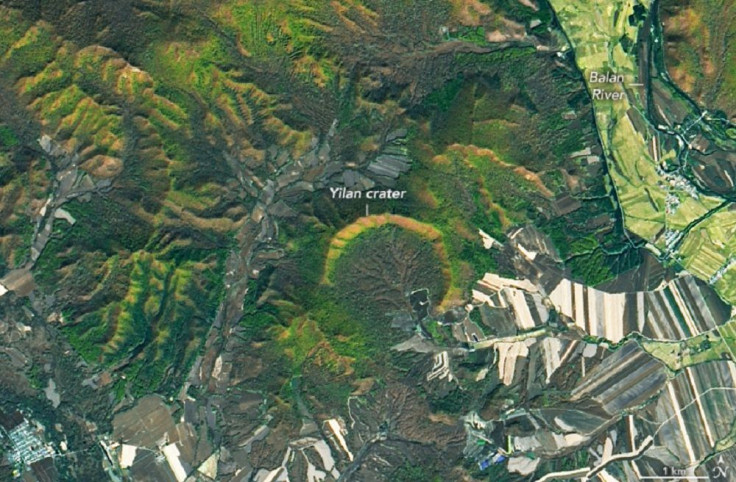Satellite Image Shows 50,000-Year-Old Asteroid Impact Crater In China [Photo]
KEY POINTS
- The Landsat 8's OLI instrument captured an image of the Yilan impact crater in China
- The shape of the crater can clearly be seen in the image
- Asteroid that created the crater struck "relatively recently in geologic time"
A satellite has captured a stunning image of an asteroid impact crater, which is 50,000-year-old, in China.
The Yilan crater was discovered by a team of geologists, NASA Earth Observatory noted. Located "northwest of Yilan in Heilongjiang Province," it is in a “heavily forested” mountain range and locals in the area called it "Quanshan" or "circular mountain range."
In the image, which was captured by the Operational Land Imager (OLI) instrument of the Landsat 8 satellite on Oct. 8, 2021, one can see the incredible shape of the impact crater from above. One may also observe that the southern part of it has been "significantly eroded," making the shape more crescent than fully circular.

"The crater has a rim-to-rim diameter of 1.85 km," the authors of a paper describing the Yilan crater, published in 2019, wrote. "Most of the crater is covered with dense forests."
The crater is about 50,000 years old, with carbon-14 dating, suggesting that it had formed 46,000 to 53,000 years ago, NASA Earth Observatory noted. And at 1.85 kilometers (1.5 miles), the Yilan crater is the largest crater on Earth that's below 100,000 years old.
At its age, the Yilan creater is actually still considered to be quite young. On the other hand, the rocks that it impacted were actually much older as they likely formed some 200 million years ago, the agency noted.
Interestingly, the Yilan crater is only the second impact crater to be discovered in China. The other one is the Xiuyan impact crater in Liaoning province, which was the "first confirmed impact structure in China."
The Xiuyan impact crater was discovered before 2020, is "bowl-shaped," and slightly smaller than the Yilan crater, with a diameter of 1.8 km.
Compared to the moon, which is known for its many craters, craters on Earth are more difficult to recognize because of the weathering and erosion on the Earth's surface, the Lunar and Planetary Institute (LPI) noted. Factors that contribute to the erasure of Earth impact craters include tectonic activity, water and atmosphere -- things that are not present on the moon.
However, it doesn't mean the Earth doesn't have notable craters. Apart from the two in China, other notable craters include the 0.5-mile Barringer Crater in Arizona and, of course, the Chicxulub crater in the Yucatan Peninsula, Mexico, which is believed to have triggered a mass extinction of 75% of the Earth's species, including the dinosaurs.
© Copyright IBTimes 2024. All rights reserved.





















